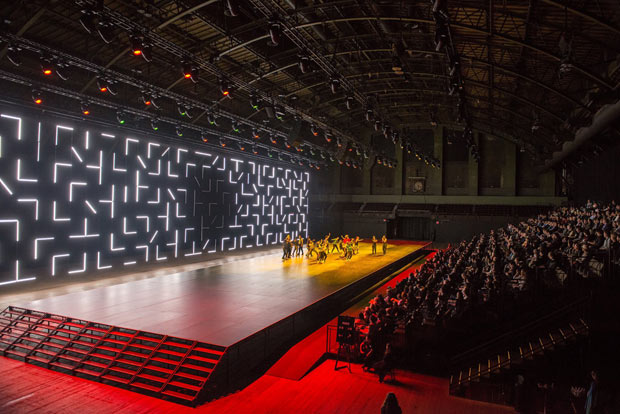
© Stephanie Berger. (Click image for larger version)
Reggie (Regg Roc Gray) and Peter Sellars
FLEXN
New York, Park Avenue Armory
1 April 2015
www.armoryonpark.org
FLEXN at the Armory
There’s no dearth of great dance in New York, but there are shows that for one reason or another resonate in a different way. Usually it has to do with the performers themselves – something about them stirs you; you respond to them as people just as much as you do as dancers. In recent seasons, I’ve felt this about the Brazilian ensemble, Companhia Urbana de Dança, the Tunisian performer Radhouane El Meddeb and the dancers of the Royal Danish Ballet, among others.
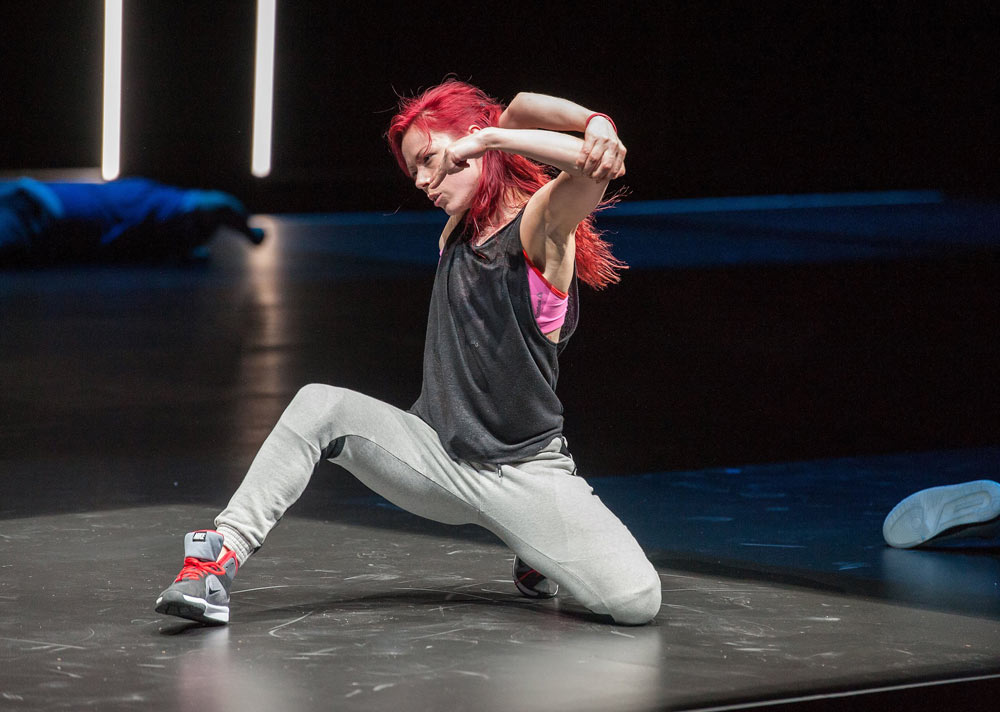
© Stephanie Berger. (Click image for larger version)
Last night, it happened again at FLEXN, the collaboration between Peter Sellars and the Flex choreographer/entrepreneur, Reggie (Regg Roc) Gray, at the Park Avenue Armory. The grandness of the space, this wood-beamed hangar that fills an entire city block, has something to do with it. (It is where the Merce Cunningham Dance Company gave its unforgettable final performances.) One entire wall of the building was filled with a light installation by Ben Zamora; it looked something like a Pac-Man game without the yellow gremlins. In front of that, a huge oblong platform was laid out, running West to East. The audience – about 800 people – sat on risers, facing the platform.
The cast was made up of twenty-two dancers, eighteen men and four women, all specialists in Flex, a kind of urban street dance. Just as Jookin is associated with Memphis, Flex has a place of origin, Brooklyn, where it evolved out of a dance hall style brought over from Jamaica. It’s an improvisatory dance, and therefore hard to pin down; like tango stylists, Flex dancers develop their own personal vocabulary and flourishes. Some common elements emerge, though, including bone-breaking, gliding, hat tricks, and pauzin. (There’s a handy “Flexapedia” in the program.) Bone breaking looks exactly as it sounds and involves eerie contortions that make you twitch and worry about early arthritis. Pauzin is like watching a movie in stop-motion: every movement is broken into jolts of varying length according to the effect desired. Gliding refers to a way of walking that looks as if the person were floating on a cushion of air. Hat tricks, are, well, hat tricks.
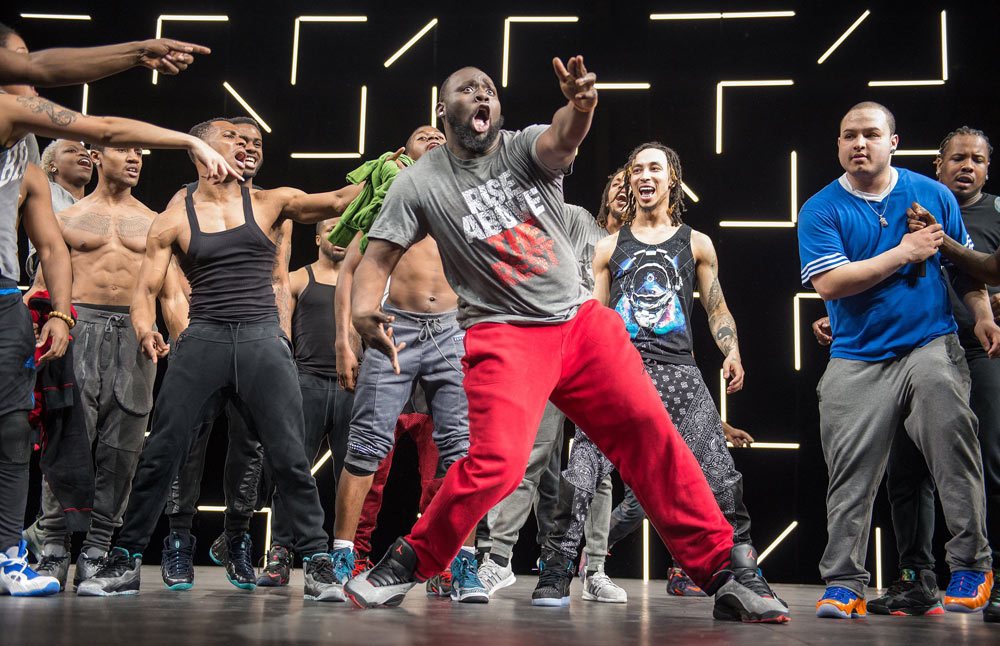
© Stephanie Berger. (Click image for larger version)
There were different levels of technical bravura in the group; some dancers, like Sean Douglas, Reggie Gray, and Quamaine Daniels (aka Karnage) made you gasp with their timing and unexpected effects, others were more understated or tended to stick to a restricted vocabulary. But, technique aside, what they all had was a palpable desire to tell stories with their bodies, a kind of bursting creativity that made the stage feel alive at every moment. The dancers were always engaged, even when the focus was mainly on someone else else. Many of the show’s segments were like little short stories – often dealing with violent death – for one or two or three dancers, with the others participating on the sides. Their involvement never looked false, or rote. They were all in it together.
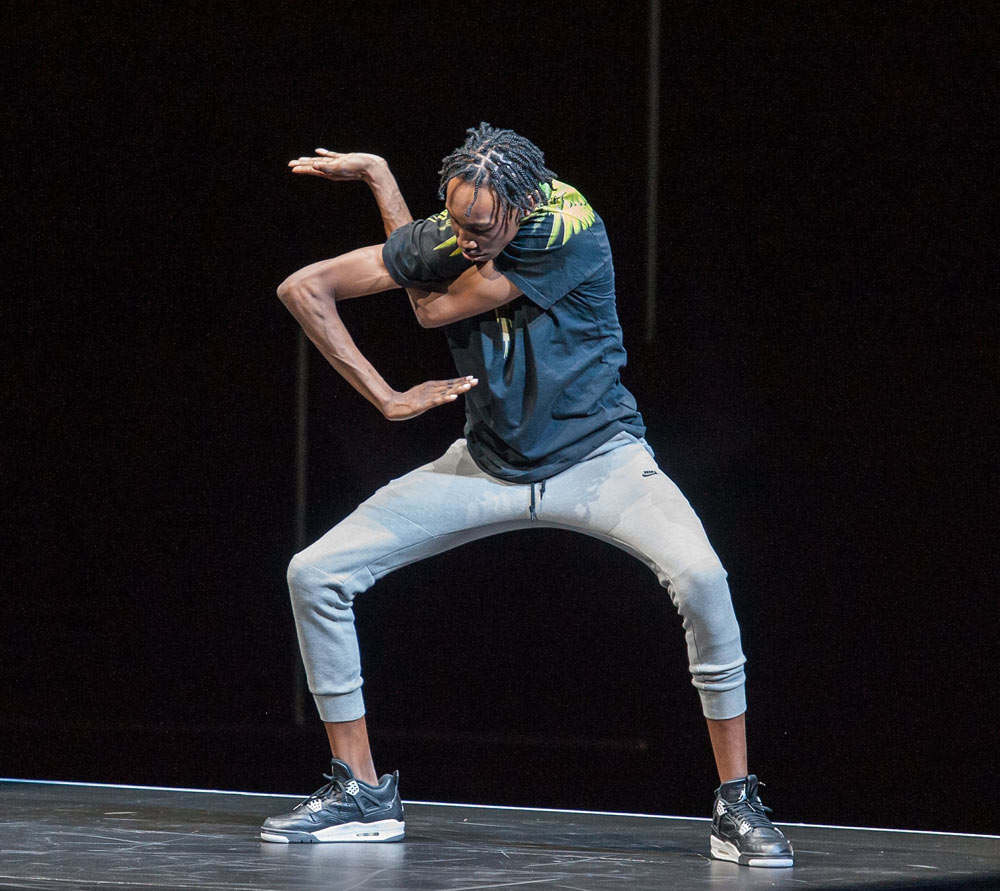
© Stephanie Berger. (Click image for larger version)
Flexn is interesting because it seems to be just as much about narrative as it is about moves. The dancers take the lyrics of rap and hip hop songs and make stories out of them. (At the Armory, the mix was spun live by Epic B.) In “Underrated,” by the hip hop singer Tank, Derick Murreld (aka Slicc) did a dance of disappointment, in which he kept falling, getting up, and falling again. Meanwhile, the words were: “I hate that I’m so underrated; And I’m kinda faded.” It sort of broke your heart. In “Fuck the World,” (a devastating song by Ace Hood), Quamine Daniels (aka Karnage) turned himself into a kind of contorted Picasso painting, exploding with rage. Daniels used his face, and especially his eyes, to enhance the drama. There were lighter moments too, as when two men battled in slow motion, Matrix-style, catching each other’s bullets in mid-air. The long-limbed, impassive Deidra “Dayntee” Braz added a quiet lyricism with her floating walks, as did Sean Douglas, in a slow, angelic dance full of wafting balances performed on a ledge above the stage. Images of flying abounded.
After the stories came a long section of expressive solos. Each member of the ensemble had a moment to do what he or she did best. Then, when Reggie Gray returned, calling out to his dancers on his microphone, they broke into a madcap free-style, bounding around the stage, encouraging each other to ever wilder feats. We were reminded of the basic impulse behind this and every dance: the impulse to move, to be among friends, to have fun. Gray is clearly a friend, a supporter, even a protector, to these young men and women. He wears this mantle with a considerable grace and warmth.
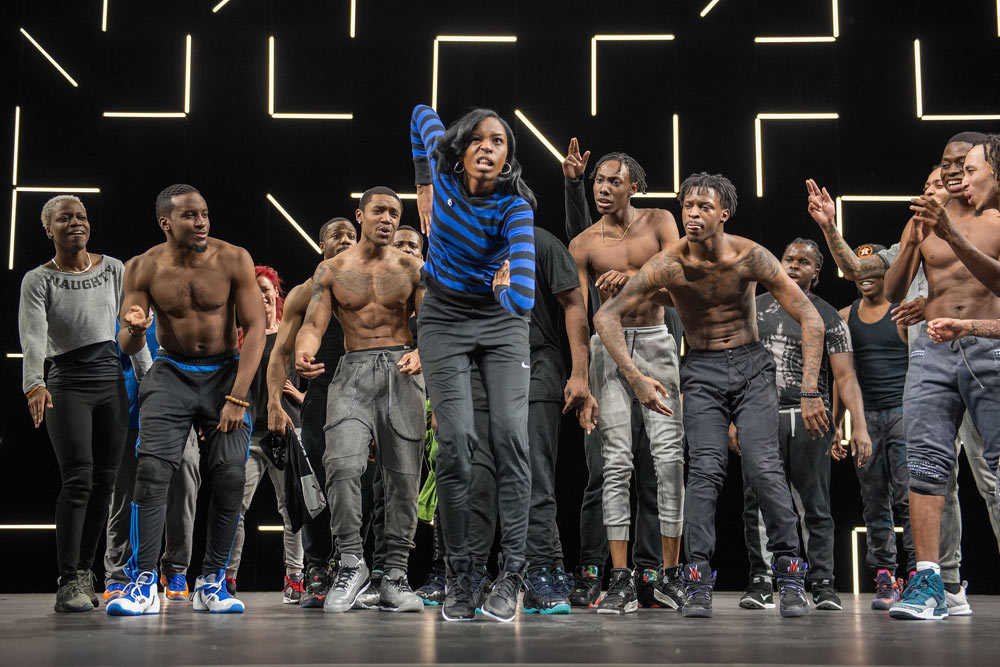
© Stephanie Berger. (Click image for larger version)
This un-scripted moment may have been the high point of the evening. Or maybe the high point was what came next, as the dancers tumbled forward and sat on the edge of the stage, legs dangling down, to exchanging greetings with the audience on their way out. That too was beautiful.












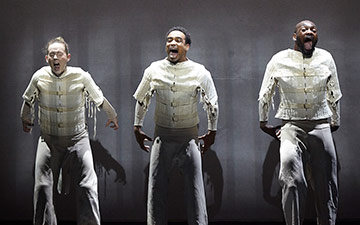
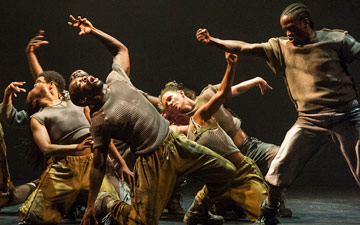

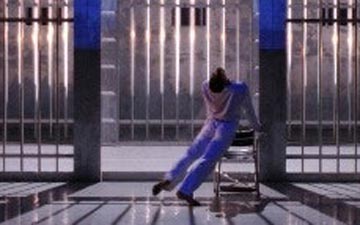

You must be logged in to post a comment.